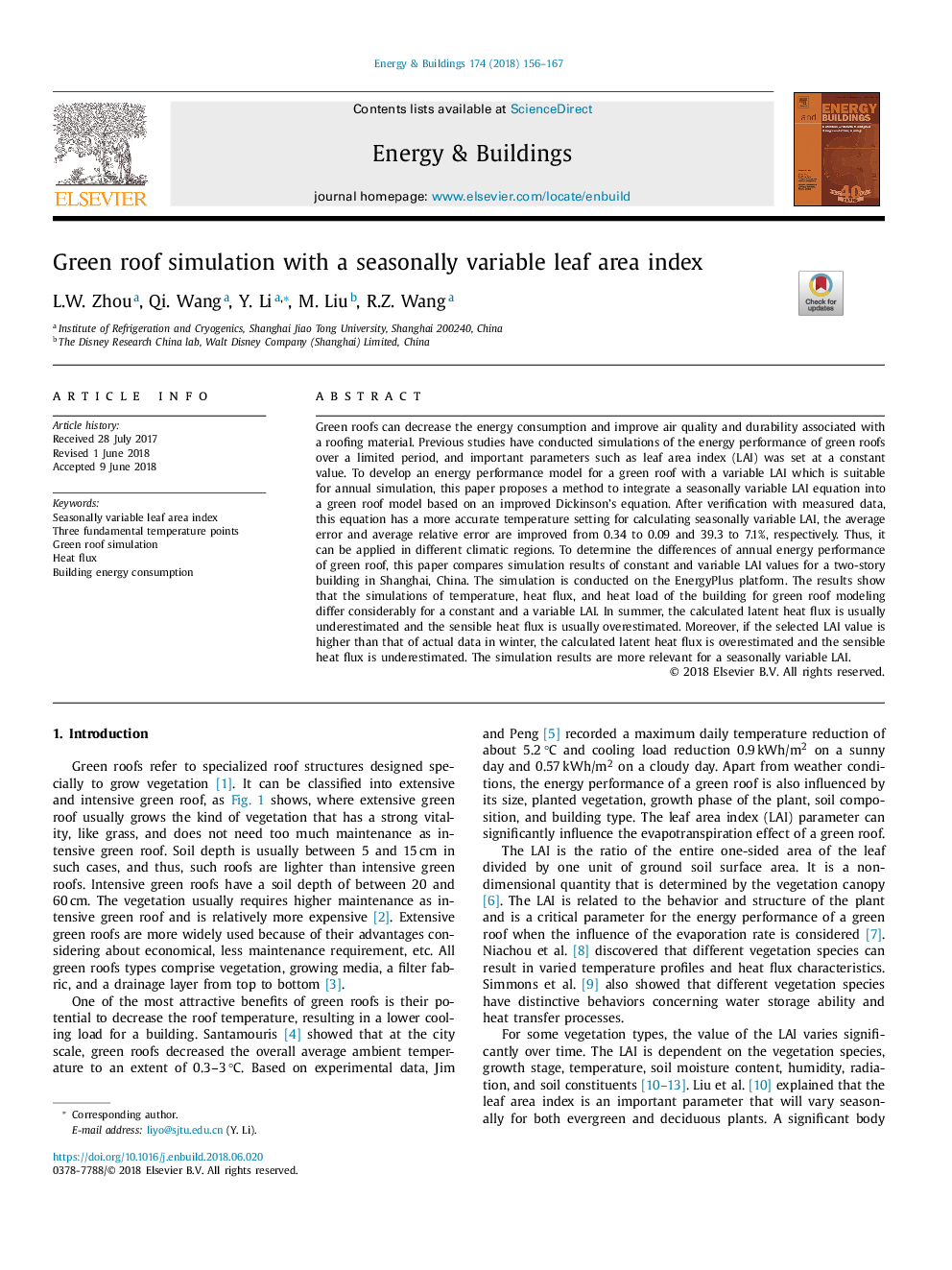| Article ID | Journal | Published Year | Pages | File Type |
|---|---|---|---|---|
| 6727254 | Energy and Buildings | 2018 | 12 Pages |
Abstract
Green roofs can decrease the energy consumption and improve air quality and durability associated with a roofing material. Previous studies have conducted simulations of the energy performance of green roofs over a limited period, and important parameters such as leaf area index (LAI) was set at a constant value. To develop an energy performance model for a green roof with a variable LAI which is suitable for annual simulation, this paper proposes a method to integrate a seasonally variable LAI equation into a green roof model based on an improved Dickinson's equation. After verification with measured data, this equation has a more accurate temperature setting for calculating seasonally variable LAI, the average error and average relative error are improved from 0.34 to 0.09 and 39.3 to 7.1%, respectively. Thus, it can be applied in different climatic regions. To determine the differences of annual energy performance of green roof, this paper compares simulation results of constant and variable LAI values for a two-story building in Shanghai, China. The simulation is conducted on the EnergyPlus platform. The results show that the simulations of temperature, heat flux, and heat load of the building for green roof modeling differ considerably for a constant and a variable LAI. In summer, the calculated latent heat flux is usually underestimated and the sensible heat flux is usually overestimated. Moreover, if the selected LAI value is higher than that of actual data in winter, the calculated latent heat flux is overestimated and the sensible heat flux is underestimated. The simulation results are more relevant for a seasonally variable LAI.
Keywords
Related Topics
Physical Sciences and Engineering
Energy
Renewable Energy, Sustainability and the Environment
Authors
Zhou L.W., Wang Qi., Li Y., Liu M., Wang R.Z.,
